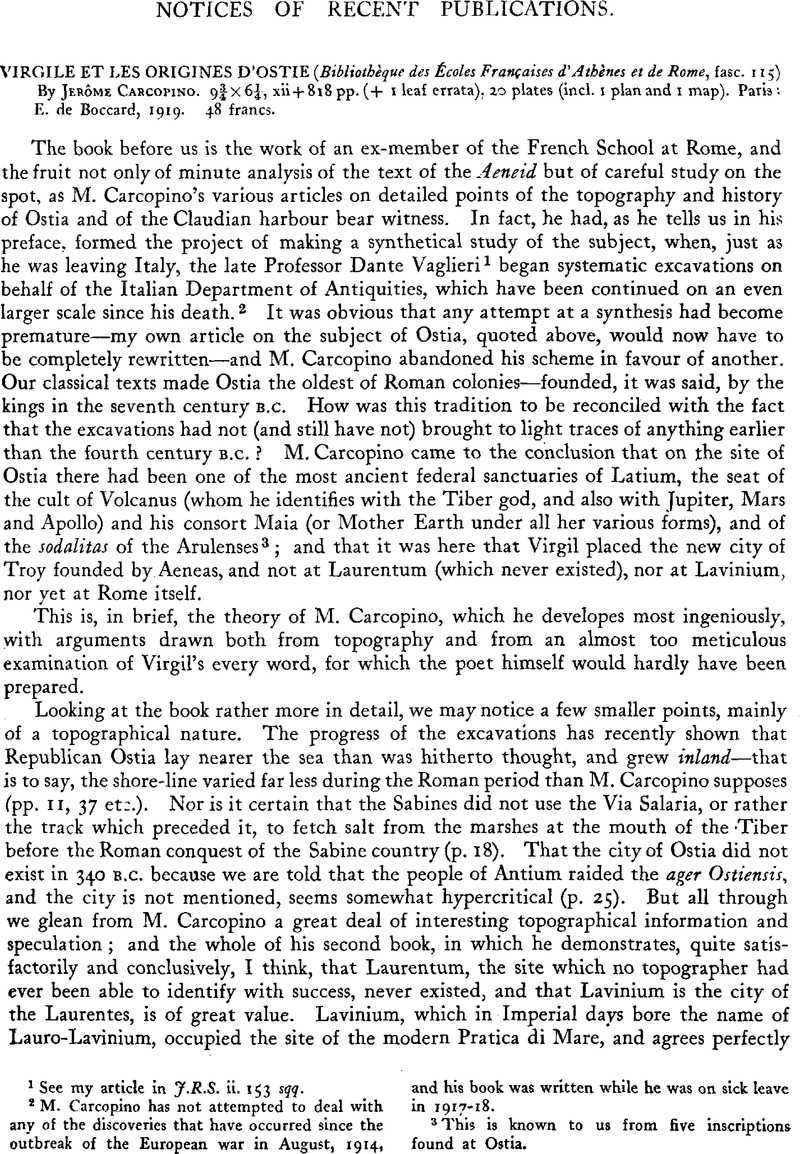No CrossRef data available.
Article contents
Virgile et Les Origines D'Ostie (Bibliothèque des Écoles Françaises d'Athènes et de Rome, fasc. 115) By Jerôme Carcopino. 9¾ × 6¼, xii + 818 pp. (+ 1 leaf errata). 20 plates (incl. 1 plan and 1 map). Paris: E. de Boccard, 1919. 48 francs.
Review products
Published online by Cambridge University Press: 24 September 2012
Abstract

- Type
- Notices of Recent Publications
- Information
- Copyright
- Copyright © Thomas Ashby 1921. Exclusive Licence to Publish: The Society for the Promotion of Roman Studies
References
page 111 note 1 See my article in J.R.S. ii. 153 sqq.
page 111 note 2 M. Carcopino has not attempted to deal with any of the discoveries that have occurred since the outbreak of the European war in August, 1914, and his book was written while he was on sick leave in 1917–18.
page 111 note 3 This is known to us from five inscriptions found at Ostia.
page 112 note 1 He points out truly that Virgil shows his knowledge of the country rather by hints than by long and detailed descriptions.
page 112 note 2 I refer to the map published in 1547 by Eufrosino della Volpaia, a unique copy of which exists in the Vatican library, and was published with an introduction by myself in 1914 (La Campagna di Roma al tempo di Paolo III, Rome, Danesi). See the text p. 43.
page 112 note 3 There is an interesting passage in Ligorio, Ottob. 3376, f. 97, s.v. Tiberi, in which he points out that the garden wall which had been built across the narrowest part of the island—it may be seen in the map reproduced by M. Carcopino on pl. xv. (and still better in the map of 1547, which is the archetype)—was one of the principal causes of the gravity of the flood.


